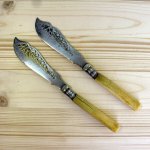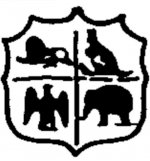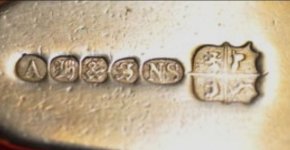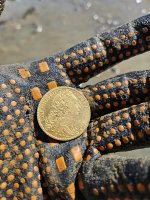Hello all,
I have this old etched/engraved knife with a king's pattern from my great grand-mother, I was wondering about the hallmarks/signatures on it. I have managed to identify on the "emblem" which consist of a lion, a rabbit, an eagle and an elephant, there is also two small letters on it: "R.D." At least, this is what my eye could see, but perhaps I am mistaken. The knife also seems to be gold plated? A butter or pâté knife perhaps?
For the four hallmarks beneath the emblem, there is a signature of M.P. I think, a star, a double "fleur de lys" and a crown.
Does anyone have any more specific information on this, than what I have been able to find so far? It's a bit of a mystery left behind from my great grand-mother.
Thanks in advance!
-Line.
Photos :
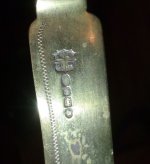
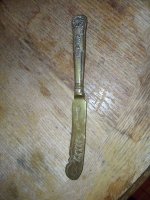
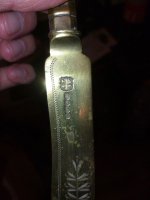
I have this old etched/engraved knife with a king's pattern from my great grand-mother, I was wondering about the hallmarks/signatures on it. I have managed to identify on the "emblem" which consist of a lion, a rabbit, an eagle and an elephant, there is also two small letters on it: "R.D." At least, this is what my eye could see, but perhaps I am mistaken. The knife also seems to be gold plated? A butter or pâté knife perhaps?
For the four hallmarks beneath the emblem, there is a signature of M.P. I think, a star, a double "fleur de lys" and a crown.
Does anyone have any more specific information on this, than what I have been able to find so far? It's a bit of a mystery left behind from my great grand-mother.

Thanks in advance!
-Line.
Photos :





